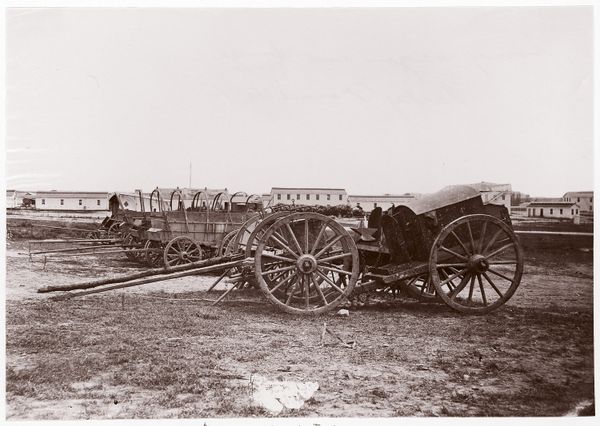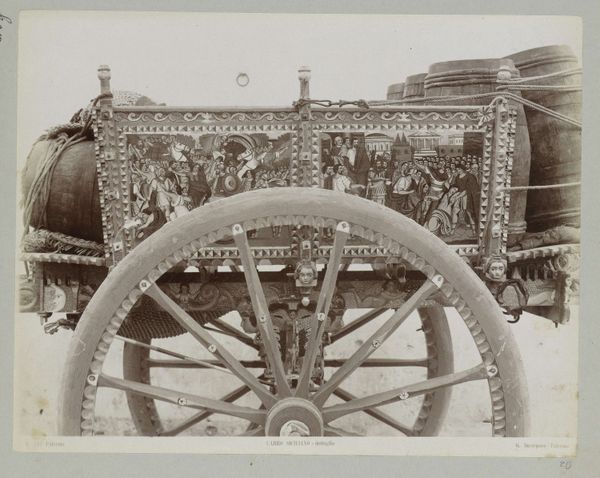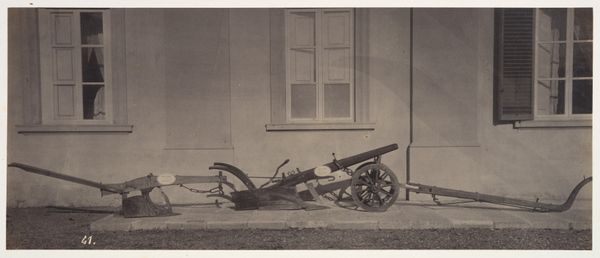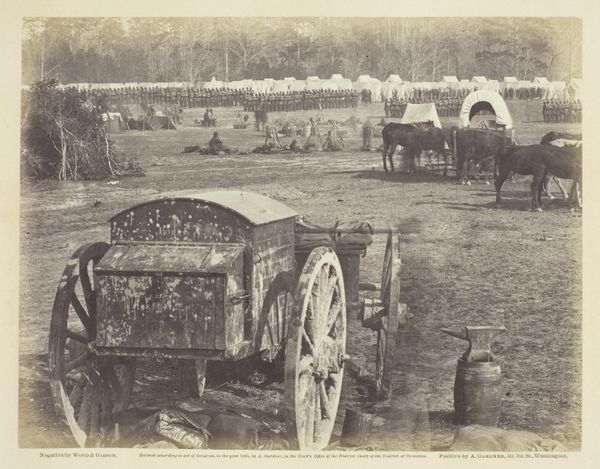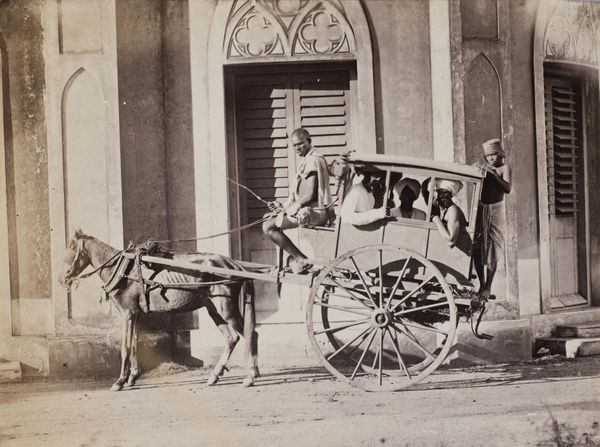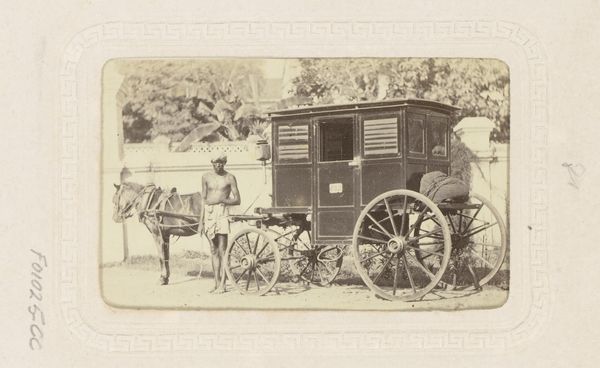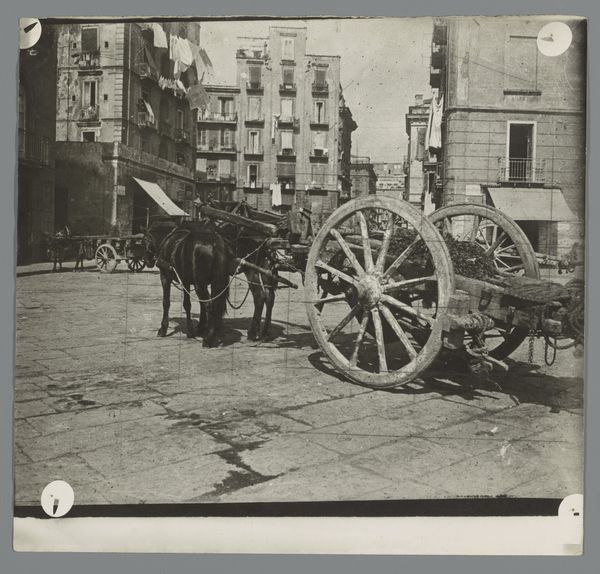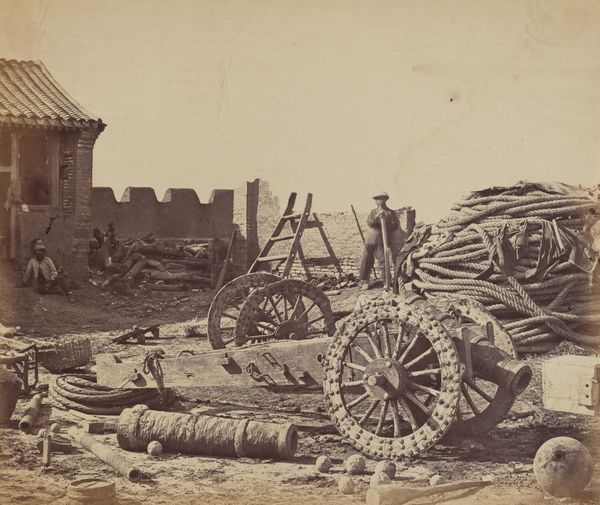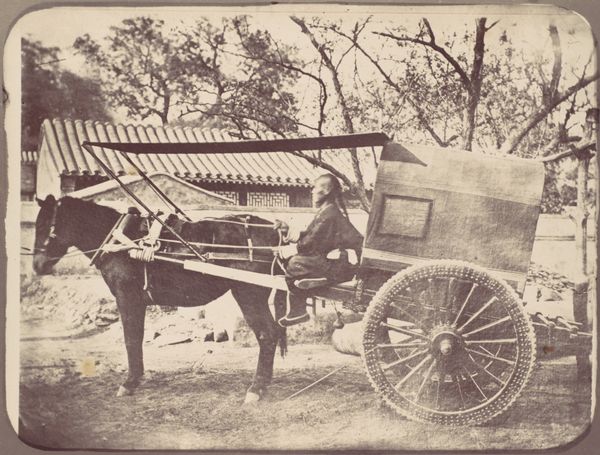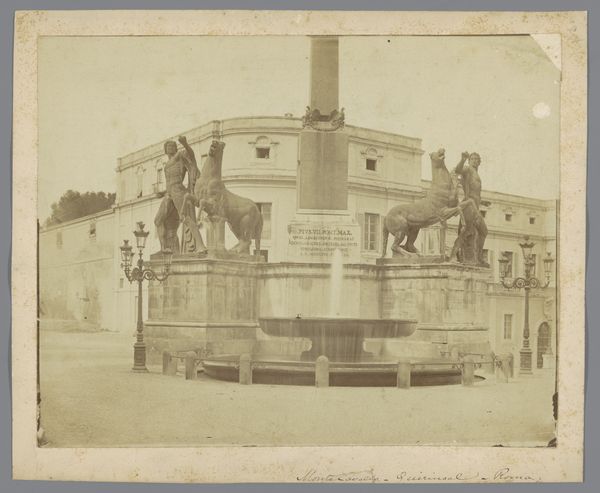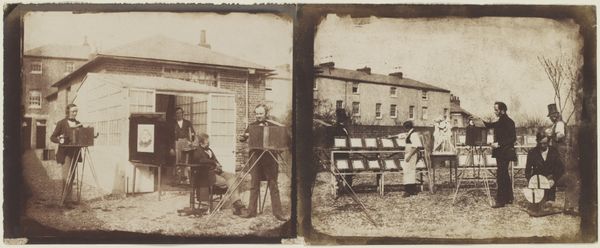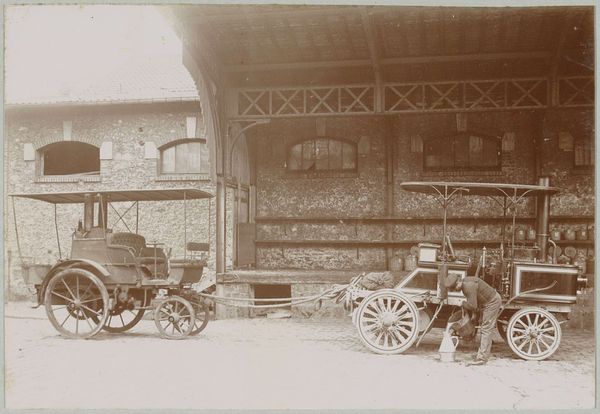![[Great Sikh Gun taken at Ferozshah on the Night of December 21, 1845, Government House, Calcutta] by John Constantine Stanley](/_next/image?url=https%3A%2F%2Fd2w8kbdekdi1gv.cloudfront.net%2FeyJidWNrZXQiOiAiYXJ0ZXJhLWltYWdlcy1idWNrZXQiLCAia2V5IjogImFydHdvcmtzLzFjMjJjNjZkLWU2NGQtNGJmNS04ZTE5LTM1MTYxZTFjMjNhZS8xYzIyYzY2ZC1lNjRkLTRiZjUtOGUxOS0zNTE2MWUxYzIzYWVfZnVsbC5qcGciLCAiZWRpdHMiOiB7InJlc2l6ZSI6IHsid2lkdGgiOiAxOTIwLCAiaGVpZ2h0IjogMTkyMCwgImZpdCI6ICJpbnNpZGUifX19&w=3840&q=75)
[Great Sikh Gun taken at Ferozshah on the Night of December 21, 1845, Government House, Calcutta] 1858 - 1861
0:00
0:00
print, photography
# print
#
landscape
#
photography
#
historical photography
#
19th century
#
public art photography
#
building
Dimensions: Image: 15.4 x 20.8 cm (6 1/16 x 8 3/16 in.) Mount: 33 x 26.4 cm (13 x 10 3/8 in.)
Copyright: Public Domain
Curator: I’m immediately struck by how monumental this photograph feels; almost haunting, in a way. Editor: That's interesting. I find it almost celebratory, like a prize placed on display. What we're seeing is a photograph taken between 1858 and 1861 by John Constantine Stanley. It’s called *Great Sikh Gun taken at Ferozshah on the Night of December 21, 1845, Government House, Calcutta.* Curator: Government House…it's an imposing setting, isn't it? You have that slightly oppressive colonial architecture as the backdrop, and then this... enormous gun taking center stage. Editor: And notice the scale! Stanley positioned the camera to really emphasize the gun’s volume and material presence. Look closely at the wooden wheels; the details preserved through photography make you imagine the craft, the joinery, the people power needed to move it. Curator: It really speaks volumes about power and dominance, doesn’t it? This captured artillery piece – a trophy of sorts. It makes me think of all the labor, not only the military actions implied, but the actual work involved in the mining, smelting, and transportation of these materials for warfare. It just feels loaded with meaning…quite literally, I suppose. Editor: Exactly. And consider how the materiality of the gun itself – the weight of metal, the precisely engineered barrel – contrasts with the rather airy, decorative details of the Government House façade. It's a juxtaposition that throws colonial authority and technological warfare into sharp relief. It feels…ominous. Curator: Ominous is the perfect word. And in placing the gun on a pedestal, you're shifting it from battlefield utility to static display. We, as viewers, are asked to observe it with a sense of…awe, perhaps, or even… fear. Editor: Or maybe, and I like this, it is meant to instill order by recontextualizing how these objects of conquest get circulated – transformed from active artillery to object for public art photography. Curator: Indeed. It's a complicated photograph, steeped in history and implications about those violent 19th-century colonial endeavors. The layers of labor, craftsmanship, conflict—captured for all time through a lens.
Comments
No comments
Be the first to comment and join the conversation on the ultimate creative platform.

